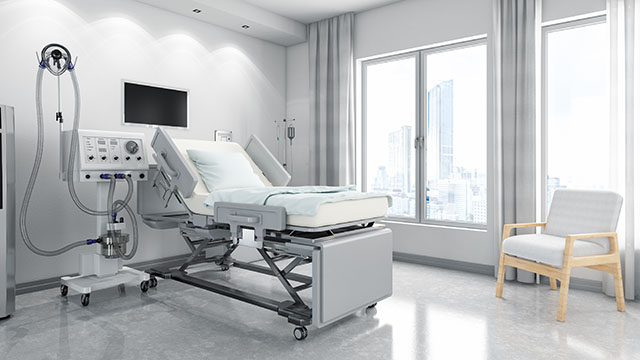Patients who were hospitalized with COVID-19 in Chicago were more likely to need a mechanical ventilator if they were older than 65 years old, male, had a history of diabetes or felt short of breath, reports a new Northwestern Medicine study.
It is the first published study to analyze the key risk factors for a severe disease course in COVID-19 patients who live in the Chicago area, and the first to examine which patients are at risk of needing a mechanical ventilator for a longer period of time. The study also highlights key differences and some similarities to what has been reported in New York COVID-19 patients.
This is the first large study to examine intubation risk factors among Chicago COVID-19 patients
The study was published May 19 in the journal Otolaryngology-Head and Neck Surgery.
“With the limited supply of mechanical ventilators nationally, understanding which patients will need a mechanical ventilator longer will help hospitals and public health officials more effectively allocate limited resources,” said corresponding study author Dr. Kevin Hur, instructor of otolaryngology-head and neck surgery at Northwestern University Feinberg School of Medicine and a Northwestern Medicine otolaryngologist.
Hur and his co-authors reviewed the medical records of 564 hospitalized COVID-19 patients at 10 Northwestern Chicago hospitals using the enterprise data warehouse. Once on a mechanical ventilator, COVID-19 patients who were older or obese required a longer time to come off of the ventilator, the study found. A history of hypertension or other medical conditions did not affect how long a patient required mechanical ventilation.
Additionally, the study found 28.4% of hospitalized COVID-19 patients were intubated, and the death rate for intubated patients was 15.2%. More than half of intubated patients were able to come off of the ventilator during the time frame of the study.
“Vulnerable populations in the Chicagoland area who are at risk of a more severe clinical course associated with COVID-19 are generally older, male, diabetic and obese,” said co-author Dr. Ashoke Khanwalkar, a fifth-year otolaryngology resident at Feinberg. “Other chronic conditions — such as heart disease, hypertension, and kidney disease — were not clearly found to influence the severity of disease in the hospital.”
There are differences and similarities in this study to what has been reported in New York. The death rate for COVID-19 patients on a mechanical ventilator at Northwestern hospitals (15.2%) was almost 10% lower than reported in New York (24.5%) during the same time period. Further research is needed to examine why there is a difference in outcomes, Hur said.


